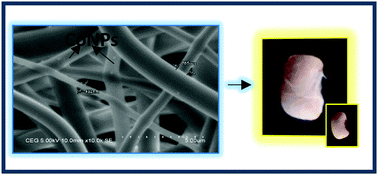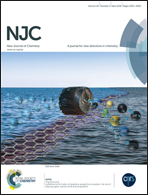Environment friendly synthesis of polyvinylpyrrolidone nanofibers and their potential use as seed coats
Abstract
This work is an effort towards creating a biocompatible seed coat which would protect the seed, possibly aid in the germination process and thereby improve the crop yield. An effective seed coat was prepared using electrospun polyvinylpyrrolidone (PVP) incorporated with urea (a commonly used fertilizer) and cobalt nanoparticles (CoNPs), a required micronutrient. Both films and electrospun fibers of the above-said material were prepared for a comparative study. The pH and conductivity measurements of the seed coat in an aqueous solution showed the extent of urea release with and without the addition of CoNPs. Both the fibers and films were studied by Fourier transform infrared spectroscopy (FTIR) which confirmed the presence of hydrogen bonding between urea and PVP. The fibers and films were further studied by XRD, TGA and SEM analyses. We have coated the seeds with urea and CoNPs incorporated PVP using two processes namely the electrospinning technique and the dip coating method. The electrospun fibers had advantages over the film due to the ease of processing, no residual solvent and high surface area. We conclude that both the fiber and the film can be fabricated to form an environment friendly and biocompatible material and along with the incorporation of urea and cobalt nanoparticles can form a potential seed coating.


 Please wait while we load your content...
Please wait while we load your content...